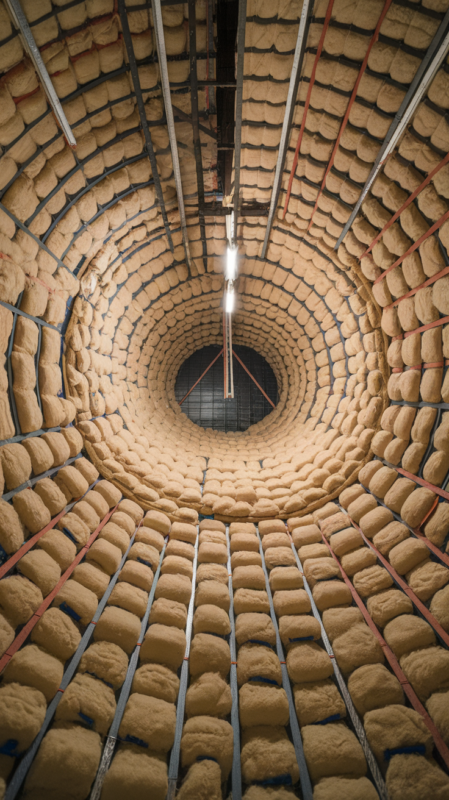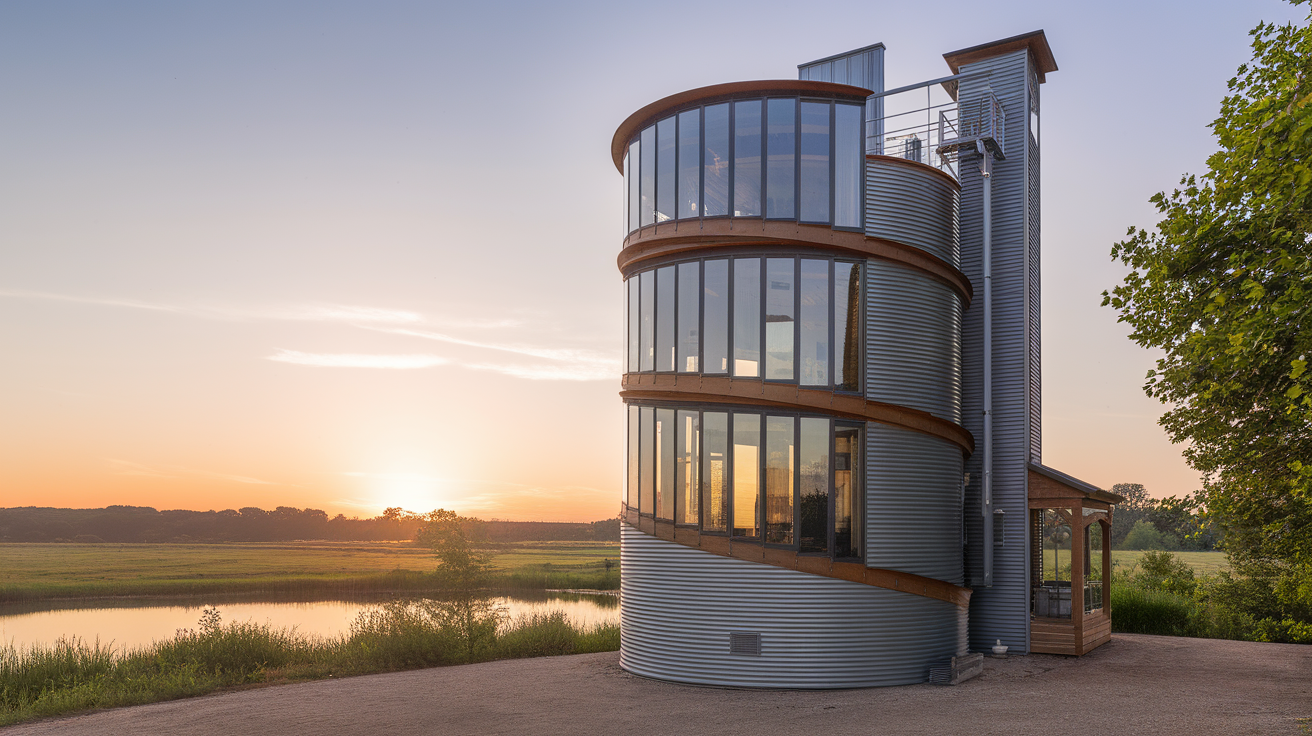Silo Conversion: Your Ultimate Guide to Building a Cylindrical Dream Home
Reimagining Rural Architecture
Looking for a truly unique DIY home project? Converting a grain silo into a living space isn’t just innovative—it’s a masterclass in sustainable building and creative design. With proper planning and execution, you can transform these agricultural giants into cozy, distinctive homes.
💡 Quick Tip: Always choose a silo that’s never been used for chemical storage. Grain silos are your safest option, as they’re designed for food storage and typically have minimal contamination concerns.
“The beauty of a silo home lies not just in its unique shape, but in giving new life to agricultural history.”
Initial Assessment and Planning

Silo Selection Criteria
- Structural integrity
- Foundation condition
- Access to utilities
- Size requirements
- Local zoning compliance
Safety Considerations
- Rust assessment
- Metal thickness
- Bolt integrity
- Foundation stability
📌 Pin this Silo Selection Checklist!
💡 Quick Tip: Use a magnetic thickness gauge to check the metal walls’ condition—any areas thinner than 14 gauge (about 0.075 inches) may need reinforcement.
DIY-Friendly Construction Steps

Phase 1: Preparation
- Clean and sanitize interior
- Remove unnecessary hardware
- Treat rust spots
- Level foundation
- Install temporary bracing
Phase 2: Basic Structure
- Cut window/door openings
- Install header supports
- Frame interior walls
- Add floor joists
- Create multiple levels
Essential Silo Conversion Tools
- Angle Grinder: Perfect for creating windows and doors
- Price range: $30-$200
- Includes: Reciprocating saw, metal blades, safety equipment
💡 Quick Tip: When cutting window openings, start small—you can always enlarge them, but patching mistakes in metal is challenging.
Insulation and Climate Control

DIY Insulation Methods
- Spray foam application
- Rigid foam panels
- Reflective barriers
- Vapor barriers
Temperature Management
- Ventilation strategy
- Window placement
- Air flow design
- Heat distribution
📌 Pin these Silo Insulation Tips!
The key to comfortable silo living isn’t just insulation—it’s creating a complete thermal envelope.
Interior Layout Design

Space Planning
- Ground floor living areas
- Sleeping loft design
- Storage solutions
- Vertical space utilization
Custom Furniture Ideas
- Curved built-ins
- Wall-hugging furniture
- Multi-purpose pieces
- Space-saving solutions
💡 Quick Tip: Build a scale model of your furniture layout using cardboard before committing to built-ins—curved spaces can be deceptive in terms of usable area.
Essential DIY Systems Installation

Plumbing Solutions
- Central utility core
- Vertical stack design
- Accessible maintenance points
- Water heating options
Electrical Planning
- Circuit layout
- Lighting design
- Outlet placement
- Safety considerations
📌 Pin this Systems Installation Guide!
Windows and Natural Light

DIY Window Installation
- Frame reinforcement
- Flashing techniques
- Sealing methods
- Glass selection
Placement Strategy
- Solar orientation
- View optimization
- Privacy considerations
- Heat management
💡 Quick Tip: Install windows in a spiral pattern up the silo to create a natural chimney effect for passive cooling.
Cost Breakdown
Basic Materials
- Silo structure: $500-$5,000
- Windows/doors: $2,000-$4,000
- Insulation: $1,500-$3,000
- Interior framing: $1,000-$2,500
- Utilities: $5,000-$10,000
Optional Upgrades
- Solar power system
- Rainwater collection
- Custom stairs
- Smart home features
Finishing Touches

Interior Finishes
- Wall treatments
- Flooring options
- Ceiling design
- Storage solutions
Exterior Elements
- Siding options
- Deck/patio integration
- Landscaping
- Access points
📌 Pin these Finishing Ideas!
💡 Quick Tip: Use flexible materials for interior walls—standard drywall often cracks when forced to curve too tightly.
Common DIY Challenges
Structure Issues
- Reinforcement needs
- Load distribution
- Weather sealing
- Foundation stability
Space Solutions
- Storage maximization
- Furniture fitting
- Room division
- Vertical integration
Maintenance Guidelines
Regular Checks
- Seal inspection
- Rust prevention
- System testing
- Structure assessment
Seasonal Tasks
- Gutter cleaning
- Insulation check
- Window sealing
- Metal treatment
💡 Quick Tip: Create a maintenance calendar with monthly and seasonal tasks—preventive care is crucial for metal structures.







